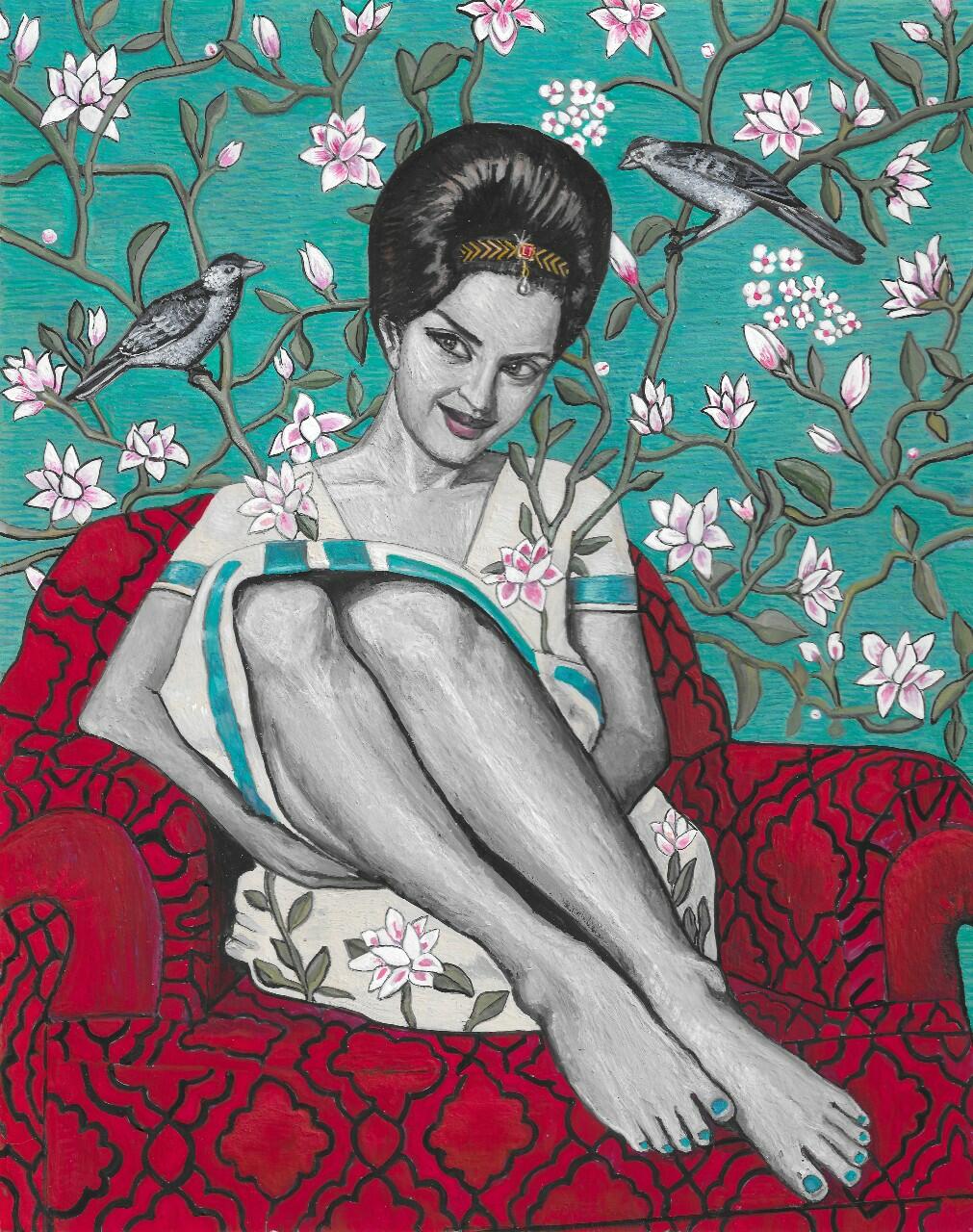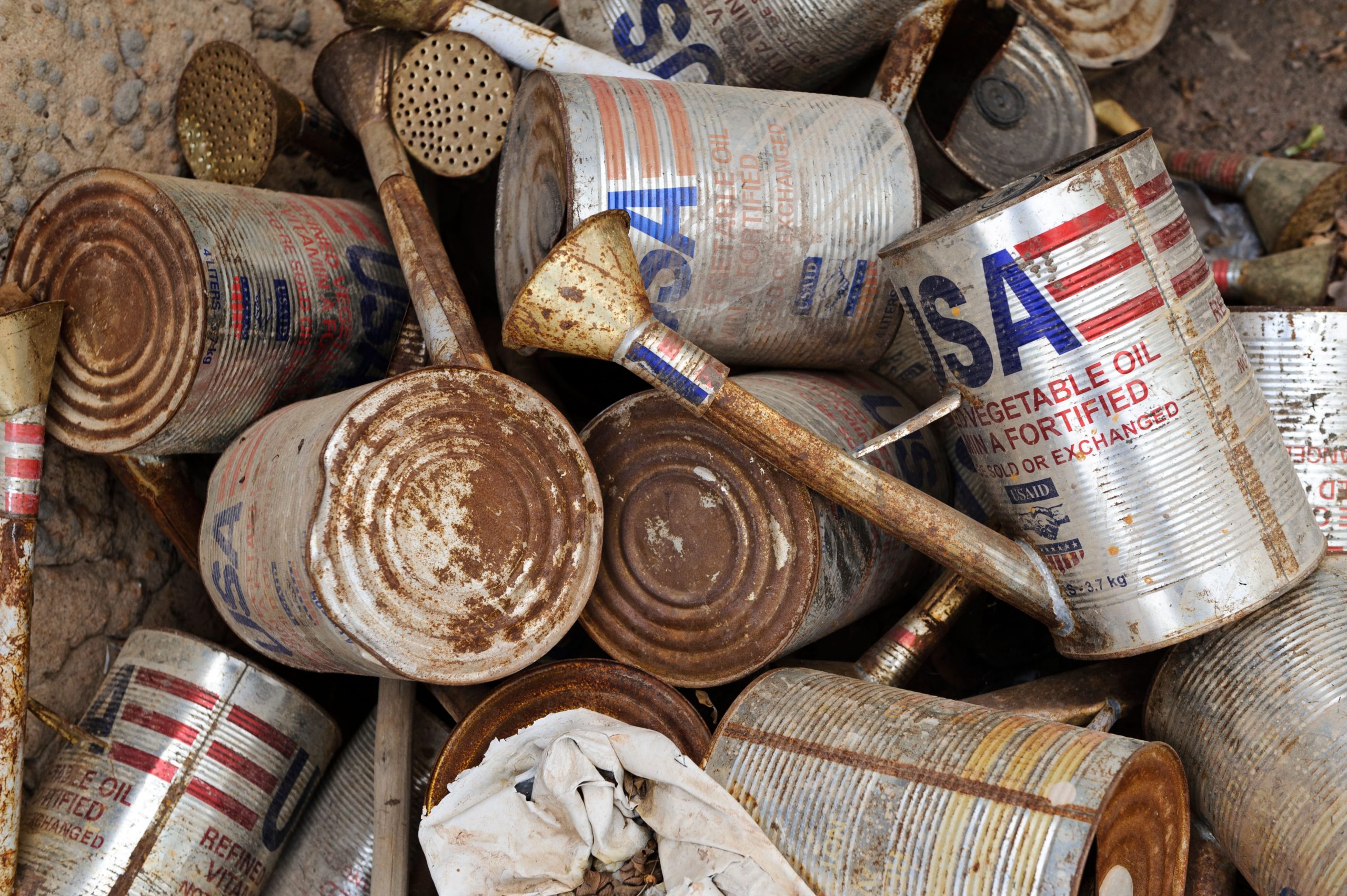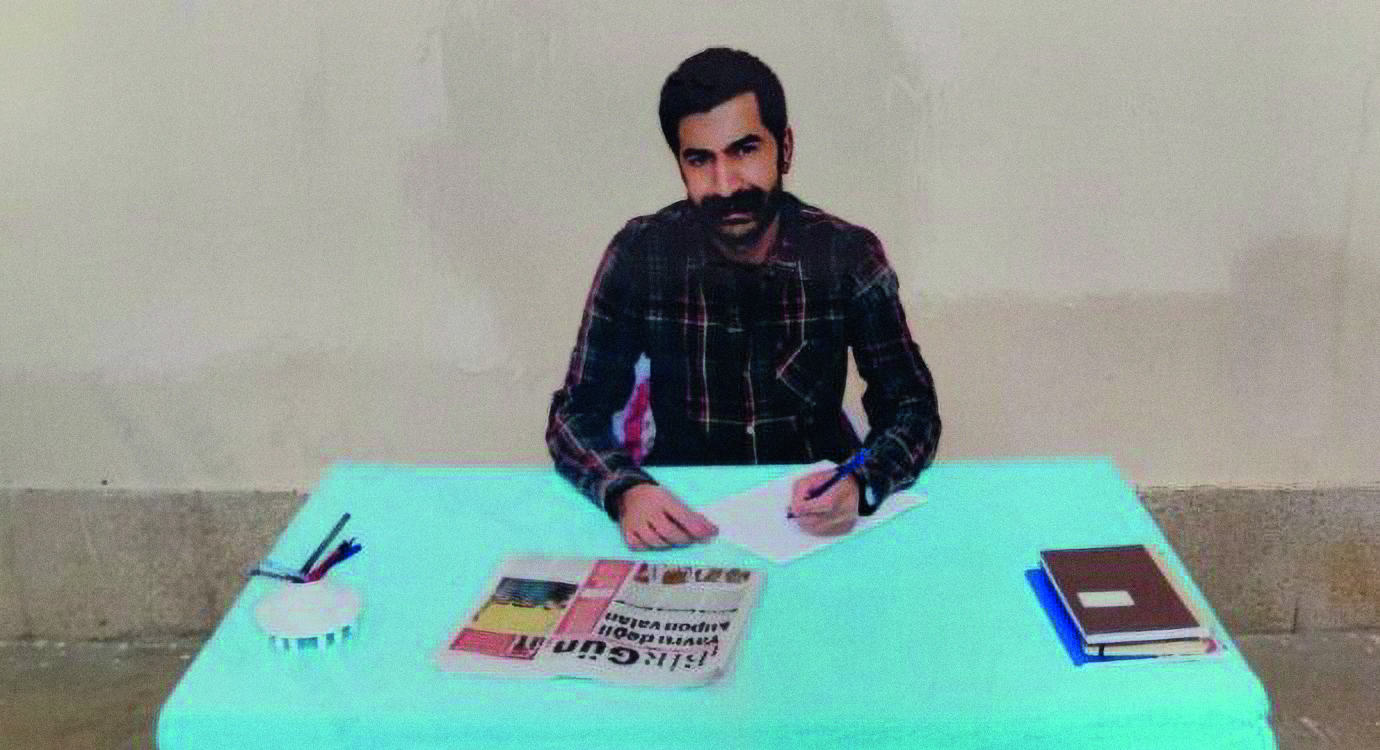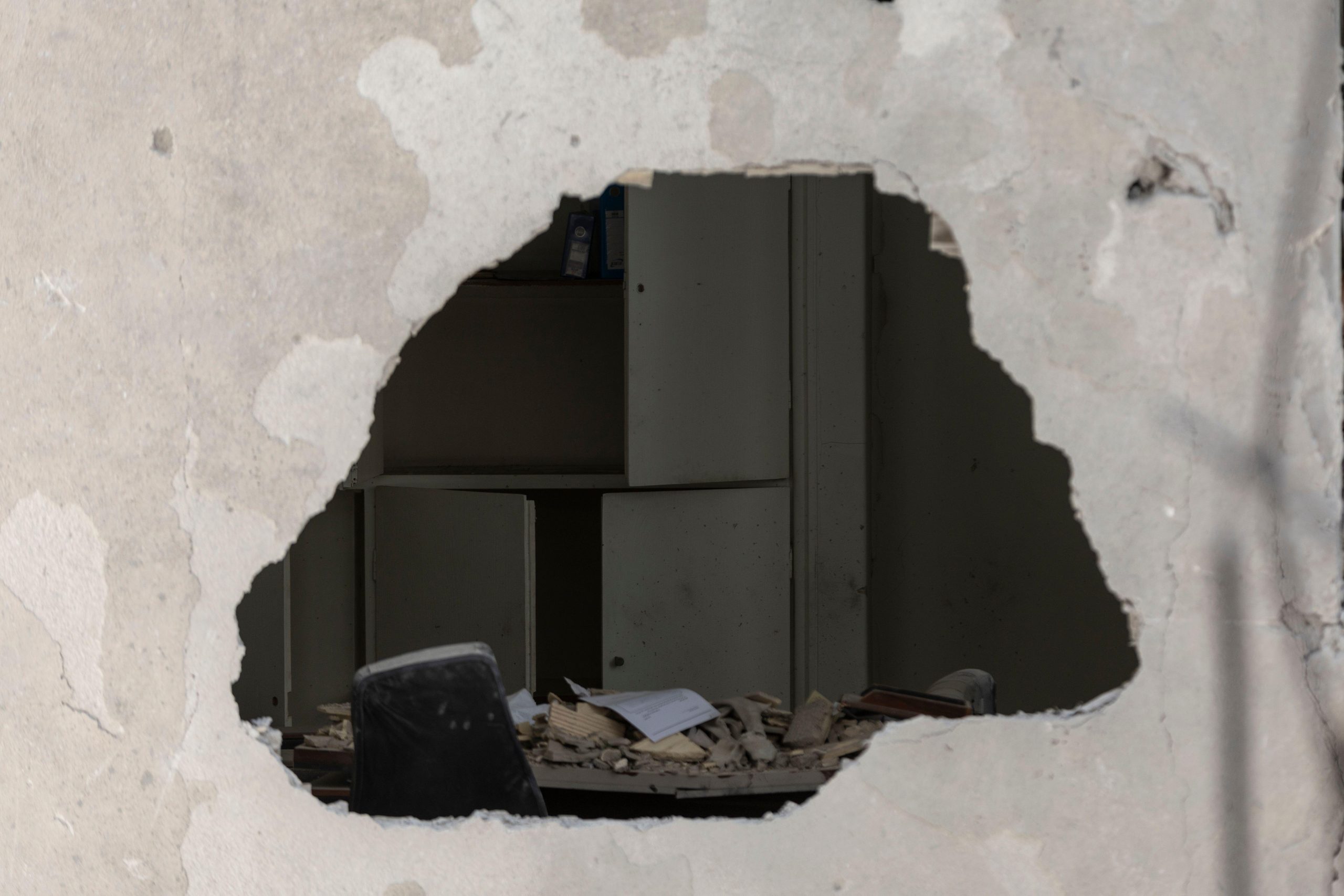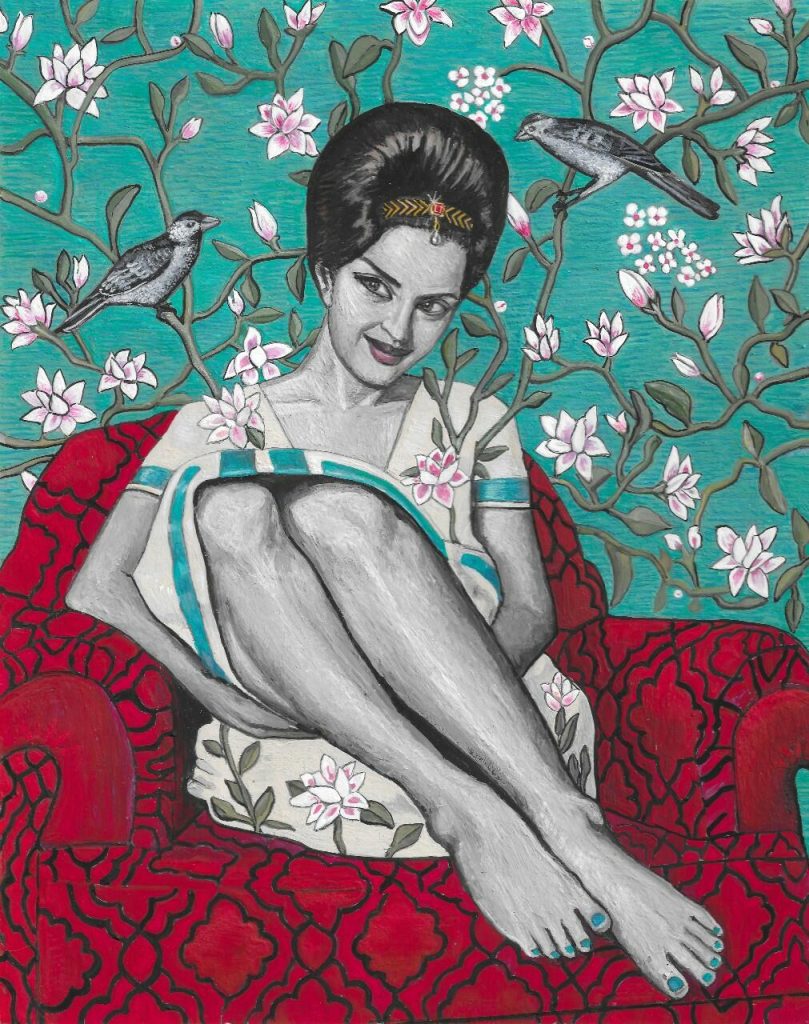
Wild at Heart (Portrait of Pouran Shapoori), 2019 Credit: Soheila Sokhanvari, courtesy Kristin Hjellegjerde Gallery
The long, winding path of The Curve art gallery at London’s Barbican Centre has been transformed into a devotional space. The cavernous room is dimly lit and echoes with the calming voices of female Iranian singers. Sprawling, Islamic, geometric patterns roll down the tall walls which are splintered with the light projected onto them by dazzling mirrored sculptures. Apart from the female voices, it feels like a mosque.
Take a closer look, and the walls are scattered with traditional Persian miniatures, depicting women whose histories have been erased in Iran. In painstaking detail, Soheila Sokhanvari’s portraits provide a snapshot into women’s lives pre-revolution. Born in Shiraz in the Fars Province of Iran, she came to England in 1978, just a year before the Islamic Revolution. But Sokhanvari remains enchanted with the country she left behind. Her miniatures depict unveiled and glamorous women, creative dissidents who pursued careers in a country awash with Western style but not its freedoms.
“I can relate directly to the women in my paintings,” she told Index. “Like them I am an artist but, unlike them, I am able to pursue my career, wear what I want and act as I want, and the idea that one day someone could take my freedom away from me is unthinkable”.
The portraits are displayed without names or biographical info but, by scanning a QR code, we are guided through the exhibition by their stories. There are 28 in total: actors, singers, poets, writers, dancers and film directors, all of which were either forced into silence or exile in 1979, when the Islamic Revolution led to a rollback in women’s legal rights. Much of their work is censored in Iran today. “I knew of many of the women from my own experience and time in Iran as a young girl,” Sokhanvari explained. “They were my idols, but finding out more information about the lives of several of the women took lots of research – they were essentially erased from the record by the regime”. She said that a small number of the women – like singer and actress Googoosh – are very famous, but that several had tragically died too young and were hard to trace.
The exhibition draws the spotlight back onto these talented women for which, she says, she feels a deep loss. The portraits beautifully capture this feeling: a simultaneous celebration of their bravery and a mourning of their freedoms. Vivid patterns and clothing contrast monochromatic faces, which make the pictures feel both vibrant and ghostly. The use of new and old multimedia was significant in telling these stories too. “I painted my portraits in the ancient technique of egg tempera, onto calf vellum, and I included films in which the women starred, ” Sokhanvari said. Two holograms of dancing Iranian actors Kobra Saeedi and Jamileh are also hidden in boxes. “I wanted the viewers to see these women, to watch them dance and to hear them sing, since they have been banned from these platforms.” The broadcasting of women’s voices in public is illegal in Iran. “I wanted to show these women at the height of their creativity, to show them as the sensational artists that they are, and using multimedia helped to achieve this immersive experience.”
This contrast of old and new is fitting. While the exhibition was curated without sight of the current unrest in Iran, the portraits certainly gain a tragic poignancy because of it. The brave women of Sokhanvari’s portraits embody much of what people are fighting for today. “Young women are at the front of this revolution and that is what gives it its power,” she told Index. “I feel a new sense of positivity and hope that perhaps we will see the end of this regime, but simultaneously I feel pain and bitterness that it is at the cost of so many bright lives.”
Although she doesn’t describe her artwork as a protest, she says that the message is political.
“What is happening in Iran can no longer be seen as just another protest, it is a revolution and I stand in solidarity with my sisters.” I asked if her portraits reflect a lost past or a hopeful future. She says both.
‘Rebel Rebel’ at The Curve, Barbican is open until 26 February 2023

